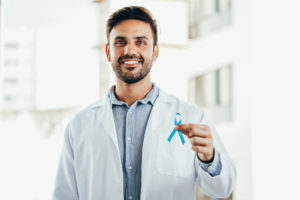 It’s natural for your prostate to grow. Likely unbeknownst to you, a man’s prostate starts growing when he hits 25. It isn’t until much later, however, that it might begin to affect lifestyle.
It’s natural for your prostate to grow. Likely unbeknownst to you, a man’s prostate starts growing when he hits 25. It isn’t until much later, however, that it might begin to affect lifestyle.
And it can be really stressful.
Advertisement
Natural prostate growth is called benign prostatic hyperplasia (BPH). A Harvard report suggests that 50-60 percent of men with BPH never have a single symptom. Others, however, can have a really tough go of it. Some symptoms include:
- Interrupted and weak urine stream
- Sudden urgency to get to the toilet
- Dribbles/leakages
- Waking up frequently during the night to urinate
Sometimes it seems like there is little you can do to alleviate these stressors. However, a few practices might help reduce symptoms and make coping with BPH a little bit easier.
Working out is one of them. If BPH makes you nervous, or you lead a high-stress lifestyle, it can lead to more frequent urination. This may have to do with muscular tension placing stress on the prostate and bladder.
Exercise can relieve stress, while also contributing to prostate health in other ways like weight loss.
Other ways to promote relaxation include mindfulness, transcendental meditation, tai chi, or hiking.
Being more patient in the bathroom can also help. I know it’s not the most appealing place to be, but spending a little more time to ensure you can fully empty your bladder may cut down on urgency and total trips to the toilet.
Advertisement
Bringing a book and sitting down instead of trying to rush out of the bathroom could help. It might not seem like it, but it may end up saving you time in the long run.
As always, try to monitor fluid intake in the evening. An enlarged prostate puts pressure on the bladder, so if it’s full of fluid, you’ll have a harder time making it through the night without multiple trips to the bathroom. Caffeinated and alcoholic beverages can exacerbate the urgency.
Managing BPH isn’t easy, but there are some things you can do to help you cope with the stress. Give these tips a try and talk to your doctor about further and more specified treatment options.
